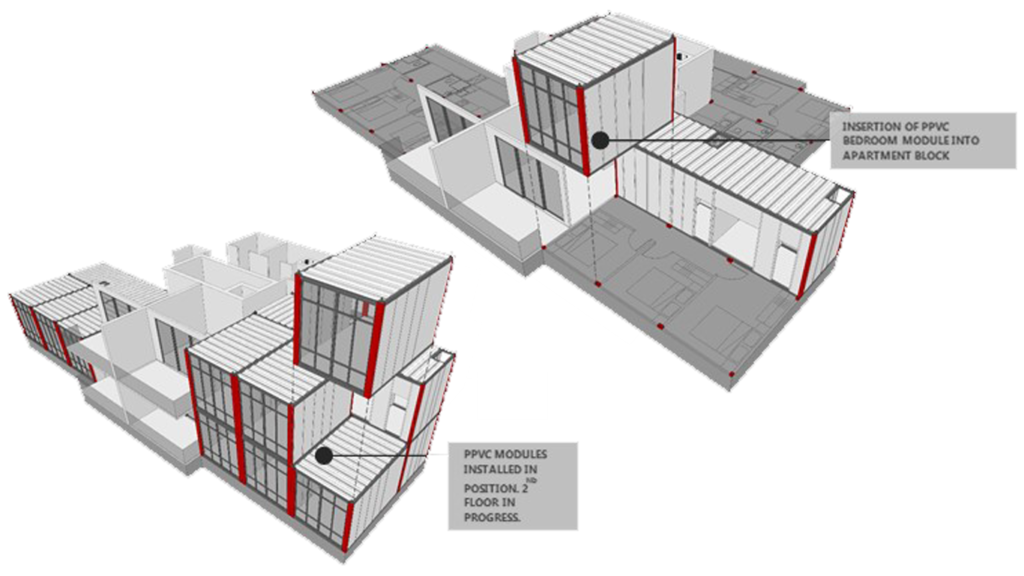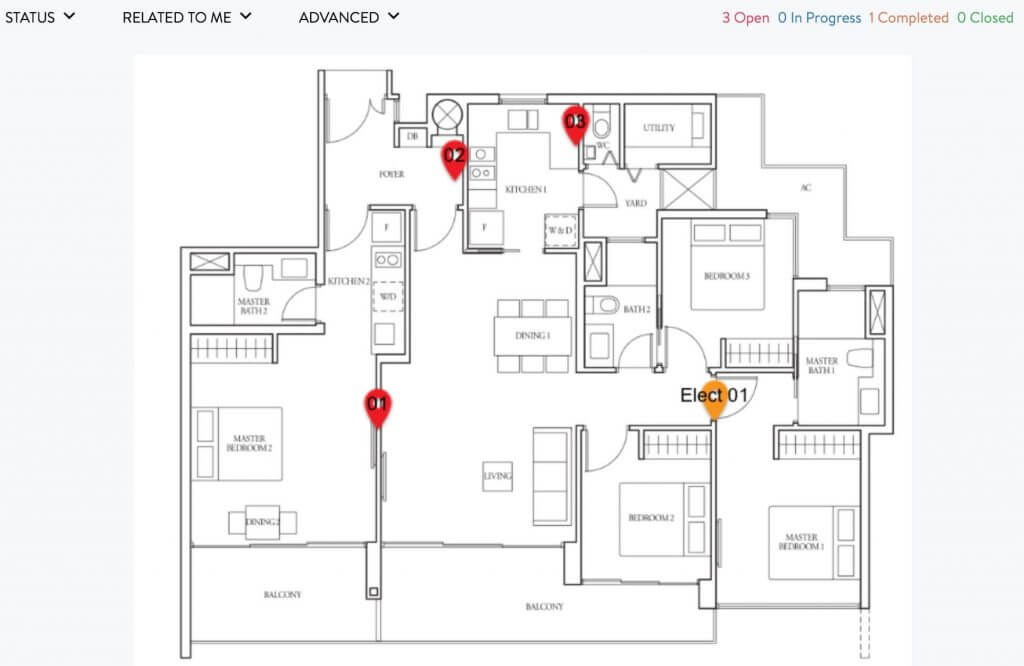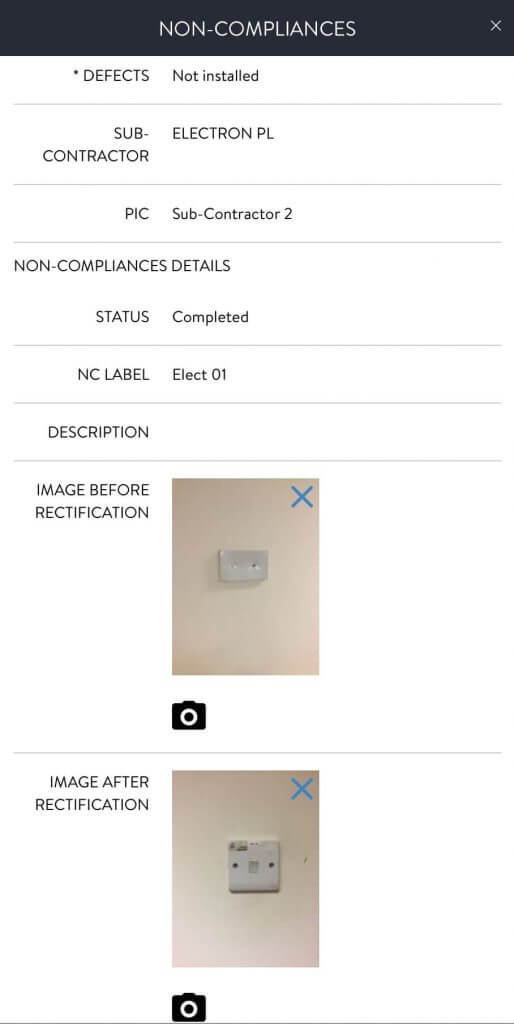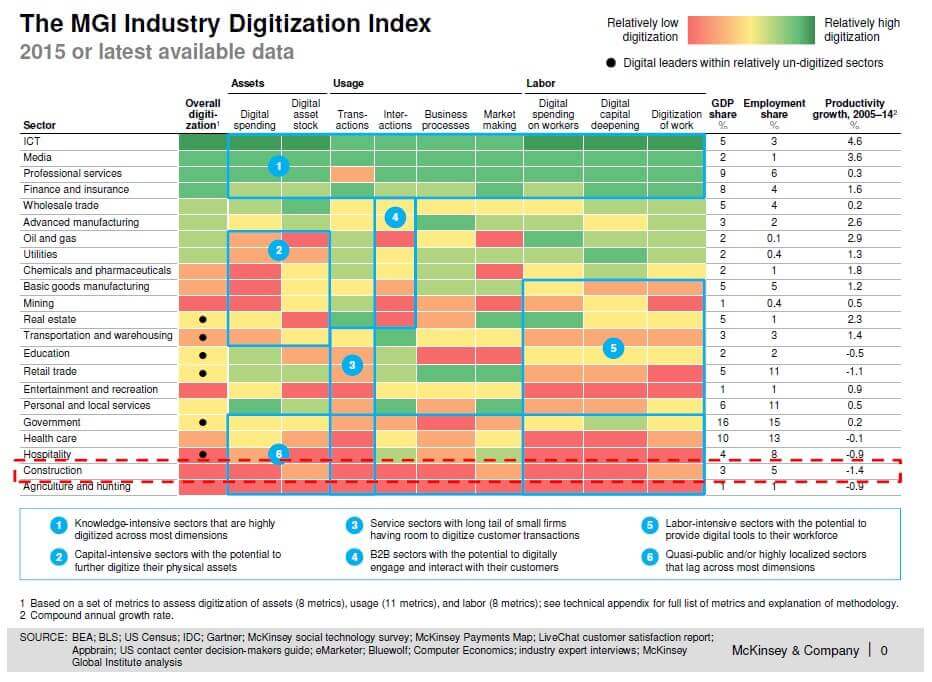The old paradigm of Facilities Management (FM) is viewed primarily as a maintenance focused field, with FM team running on regular team schedule, and the use of nuts and bolts to rectify faults and breakdowns. This model has since evolved with technological advancements making great strides, having the ability to aid the facilities manager in carrying out his duties more efficiently.
The facilities manager needs to stay updated with current innovations and be prepared for digital transformation. The reality is that buildings are increasingly intelligent, all affixed with softwares, sensors, and even artificial intelligence developments.
This shift is being motivated by the convergence of a few key factors:
- Internet of Things (IoT) in FM
- Advanced HVAC Technology
- Drones in FM
- BIM for FM
The Internet of Things (IoT) in Facilities Management
In the FM sector, IoT refers to the network of internet accessible devices used by a building/facility. It relies on tools such as sensors and thermostats to evaluate data, thereby reducing the amount of energy used for each FM task. Each sensor picks up data in a building to better inform the FM team on current temperature, number of people utilising certain areas, light, vibration or even sound levels in different areas of a building.
A smart FM system is capable of interacting with the occupants and designing preventive or predictive systems for building owners. For example, organisations that provide cafeteria service for a large staff, can display a sensor system capable of detecting the amount of clean trays stacked on the shelves, so that cooks are able to find out if more food needs to be prepared.
The example of IoT is better described using the human anatomy. With better communication between the sum of different body parts, it yields better results for a healthy person with a fully functional body system. In the case of using IoT systems, it can potentially reduce total energy bills, and provide insightful data to improve the entire value chain of a building.
The Lifelong Learning Institute (LLI), where it is home to state-of-the-art vertical green walls that run on an automatic irrigation system is an example on the use of sensors (in this case to measure water levels) to evaluate data. This is where Surbana Jurong’s FM site team works alongside building owner, to devise a schedule that holds records on balanced water supply, ensuring that the plants are acclimatised to the unpredictable weather, and are properly hydrated. (Please refer to Diagram 1 for the vertical green walls with automatic irrigation system)
An Energy Management Programme was initiated with LLI building tenants to help them reduce carbon footprint through energy reduction. The team was able to do this by individually customising the air-con operating hours of in-house tenants, so they will automatically switch on/off during business hours. LLI has also started the use of Smart Building Management System, which works on a single platform to control various mechanical and electrical systems in the building.
The use of automation such as Robotic Cleaners, Automated Mobile Floor Scrubbers, and Customer Service Kiosks, not only improve efficiency level, there is also a significant reduction in the need to employ more cleaning staff.
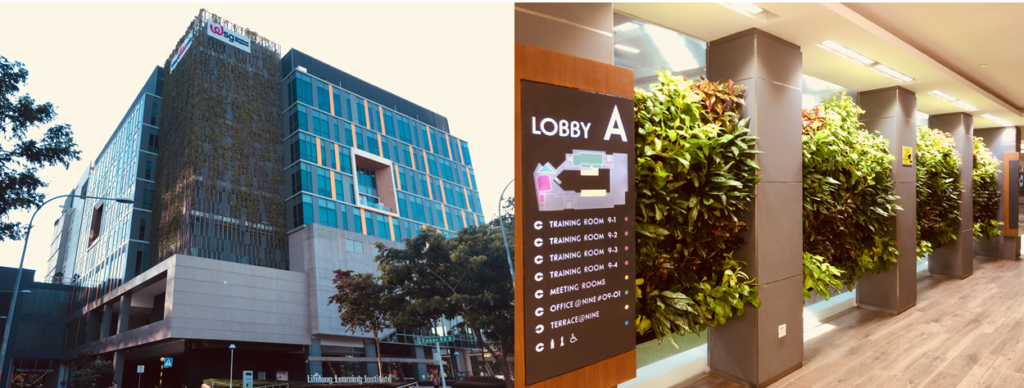
Advanced HVAC Technology
We know that the HVAC system is expensive to use and maintain in large facilities. And building owners are armed with the objective to reduce cost of heating and cooling a facility, while also reducing environmental footprint. Advancements in HVAC facility management technologies and Building Automation Systems (BAS) have come a long way in reducing FM costs, which also provide building owners the opportunity to prevent costly equipment failure by solving problems, ie preventive maintenance, before they occur.
In the last couple of years, technology and the implementation of “Green” ideas have prompted some transformational changes in HVAC systems. The Hive @ National Technological University of Singapore (NTU) first adopted and implemented the Passive Displacement Ventilation (PDV) technology, with the assistance of Surbana Jurong’s FM team in their maintenance efforts. PDV is a method of cooling a room where no fans are required, resulting in the elimination of vibration and noises from the supplied air flow. The building is equipped with special metal coils with cold water flowing through them. This cools the wind which enters the classroom and removes hot air via convection. In addition, the openings between pods allow for natural ventilation to the atrium, corridors, staircases, and lift lobby. As PDV does not contain mechanical parts, the likelihood of faults and breakdown is reduced significantly. Manpower needed for maintenance is also decreased, as it only involves vacuuming and draining the system. In the following years, approximately half of NTU’s campus space will be retrofitted with PDV.
Surbana Jurong’s FM team has also proposed and assisted NTU to implement several energy savings strategies for its Air-Conditioning & Mechanical Ventilation (ACMV) systems. These notable energy saving strategies based on a two-pronged approach have helped NTU achieve the required energy efficiency for the BCA Green Mark Platinum Award.
Drones in Facilities Management
Drones, or unmanned aerial vehicles, bring about incredible opportunities for improved efficiency in FM. They are set to revolutionise the way FMs work. Access equipment such as aerial work platforms, scaffolding and lifts is expensive, but is necessary to inspect rooftops and other hard-to-reach areas. It is also time-consuming to build and put in place, and then to tear down. Drones, on the other hand, allow inspections of areas that are difficult to access or dangerous to monitor, saving time and keeping workers safe. JTC Corporation, in which Surbana Jurong provides services & support for its industrial projects, uses drones to carry out trial and façade inspections.
The speed of collecting data is another huge benefit for FMs who use drones. It is not just money saved in man hours, it is also money saved through getting equipment back in place sooner than later.
BIM for Facility Management
Building Information Modelling (BIM) is a method of creating and using coordinated computational information about a building project in design, construction and operation. It is gaining traction around the world, presenting new methods of analysing models in ways that were not previously possible.
BIM takes on different meanings to different stakeholders – it is based on the different requirements and objectives across the entire building lifecycle. Architects can analyse designs and look at more design iterations earlier in the process, and provide basic rendered models faster to help communicate design intent. Engineers can understand how their systems will affect building design, operation requirements, sustainability and cost. Construction teams can use BIM model for time and cost management in the fabrication and assembly process. Facility Managers can have 3D visualisation from the geometry model of the design, and both the model and data can be ported into FM systems to better manage the building.
Conclusion
The demands of constantly building the most technologically advanced FM systems and automation is prevalent in keeping pace with the growth of global economy. Integration is key to streamlining processes, and the involvement of FM at every stage of building plan, design and construction is crucial
The role of the Facilities Management team, in a nutshell, also changes with time and ever-evolving technology. The FM team now plays a more involved role in co-managing/partnering a facility. While the delivery of service quality to clients remains a top priority, the ability to co-manage a facility cohesively and successfully, together with the building owner, is a skill which may not be trained.
In an organisation like Surbana Jurong that offers the full suite of urban planning, construction and maintenance, the Facilities Management team or the “Heartwares” behind it, is truly the backbone that will withstand the building’s test of time – making it operationally viable, and sustainable.
This article is co-created by Surbana Jurong Academy.
Perspectives, developed by SJ Academy, is our platform to explore new ways of tackling some of today’s most complex challenges. We draw on ideas and opinions from our staff associates and experts across different businesses. Click here to read more about the Workplace of the Future, Urban Development, and Water Management.





